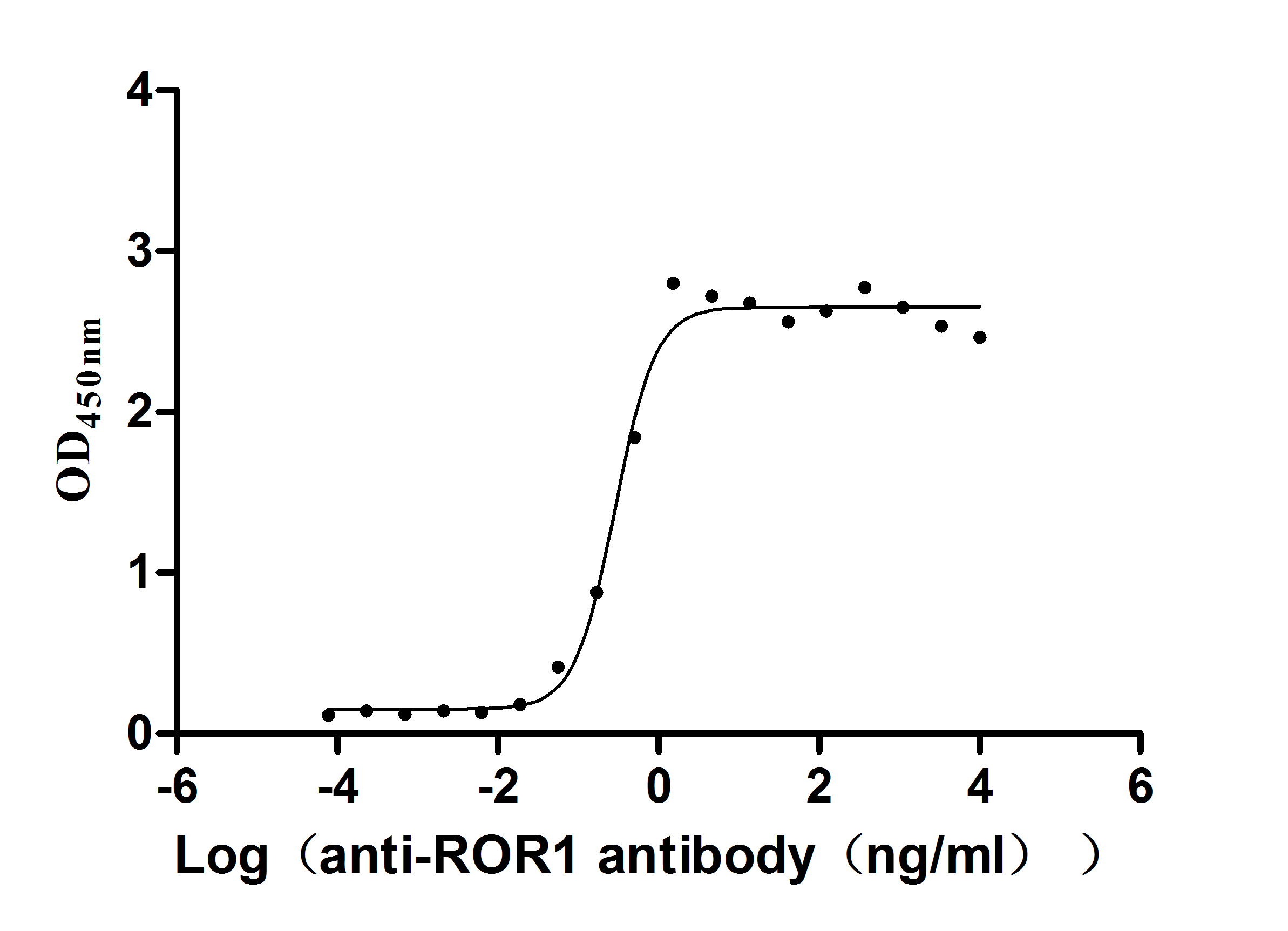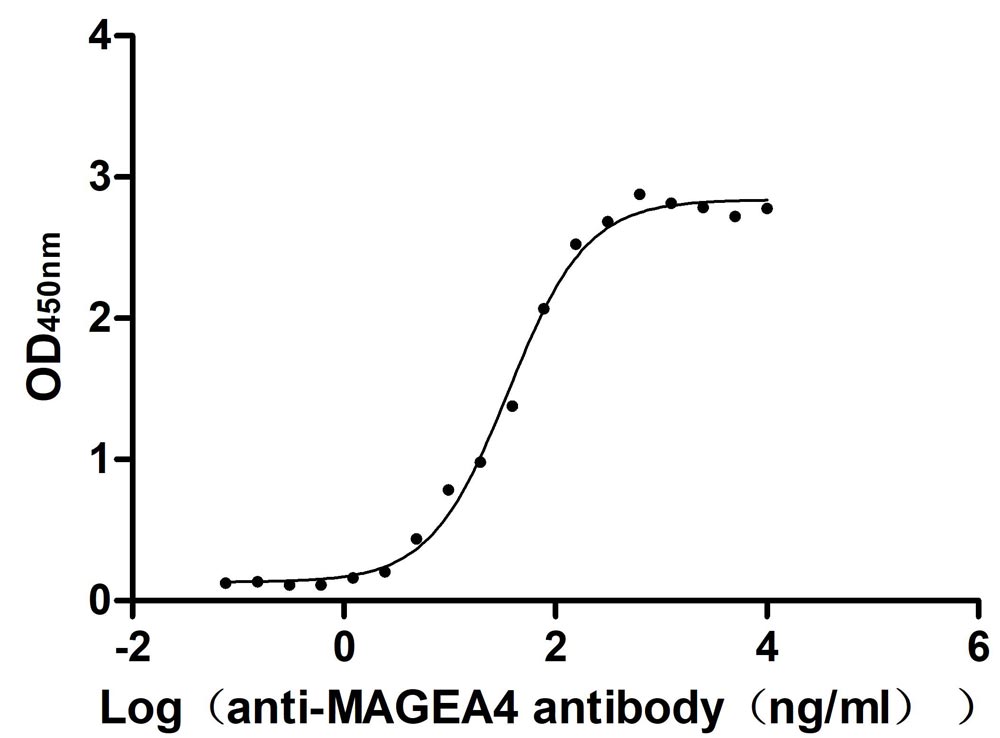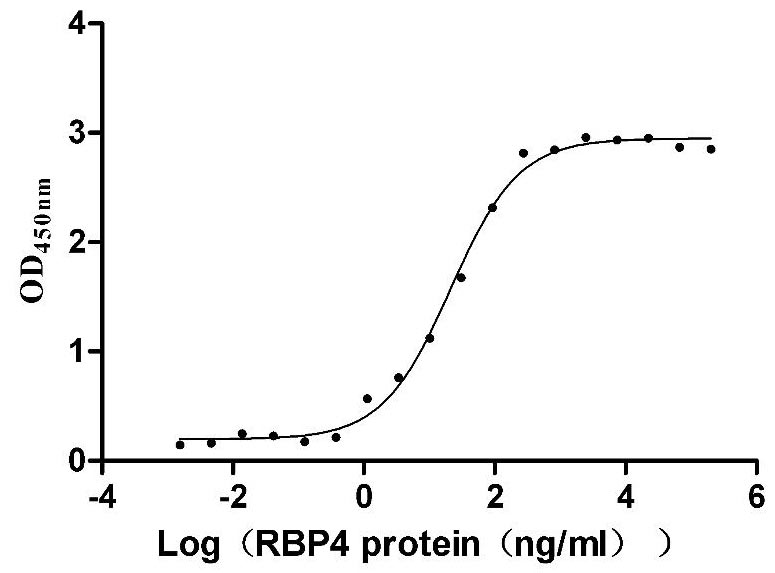Recombinant Mouse Follistatin-related protein 1 (Fstl1)
-
中文名称:小鼠Fstl1重组蛋白
-
货号:CSB-YP723459MO
-
规格:
-
来源:Yeast
-
其他:
-
中文名称:小鼠Fstl1重组蛋白
-
货号:CSB-EP723459MO
-
规格:
-
来源:E.coli
-
其他:
-
中文名称:小鼠Fstl1重组蛋白
-
货号:CSB-EP723459MO-B
-
规格:
-
来源:E.coli
-
共轭:Avi-tag Biotinylated
E. coli biotin ligase (BirA) is highly specific in covalently attaching biotin to the 15 amino acid AviTag peptide. This recombinant protein was biotinylated in vivo by AviTag-BirA technology, which method is BriA catalyzes amide linkage between the biotin and the specific lysine of the AviTag.
-
其他:
-
中文名称:小鼠Fstl1重组蛋白
-
货号:CSB-BP723459MO
-
规格:
-
来源:Baculovirus
-
其他:
-
中文名称:小鼠Fstl1重组蛋白
-
货号:CSB-MP723459MO
-
规格:
-
来源:Mammalian cell
-
其他:
产品详情
-
纯度:>85% (SDS-PAGE)
-
基因名:Fstl1
-
Uniprot No.:
-
别名:Fstl1; Frp; Fstl; Tsc36Follistatin-related protein 1; Follistatin-like protein 1; TGF-beta-inducible protein TSC-36
-
种属:Mus musculus (Mouse)
-
蛋白长度:Full Length of Mature Protein
-
表达区域:19-306
-
氨基酸序列EE EPRSKSKICA NVFCGAGREC AVTEKGEPTC LCIEQCKPHK RPVCGSNGKT YLNHCELHRD ACLTGSKIQV DYDGHCKEKK SASPSASPVV CYQANRDELR RRLIQWLEAE IIPDGWFSKG SNYSEILDKY FKSFDNGDSH LDSSEFLKFV EQNETAINIT TYADQENNKL LRSLCVDALI ELSDENADWK LSFQEFLKCL NPSFNPPEKK CALEDETYAD GAETEVDCNR CVCSCGHWVC TAMTCDGKNQ KGVQTHTEEE KTGYVQELQK HQGTAEKTKK VNTKEI
-
蛋白标签:Tag type will be determined during the manufacturing process.
The tag type will be determined during production process. If you have specified tag type, please tell us and we will develop the specified tag preferentially. -
产品提供形式:Lyophilized powder
Note: We will preferentially ship the format that we have in stock, however, if you have any special requirement for the format, please remark your requirement when placing the order, we will prepare according to your demand. -
复溶:We recommend that this vial be briefly centrifuged prior to opening to bring the contents to the bottom. Please reconstitute protein in deionized sterile water to a concentration of 0.1-1.0 mg/mL.We recommend to add 5-50% of glycerol (final concentration) and aliquot for long-term storage at -20℃/-80℃. Our default final concentration of glycerol is 50%. Customers could use it as reference.
-
储存条件:Store at -20°C/-80°C upon receipt, aliquoting is necessary for mutiple use. Avoid repeated freeze-thaw cycles.
-
保质期:The shelf life is related to many factors, storage state, buffer ingredients, storage temperature and the stability of the protein itself.
Generally, the shelf life of liquid form is 6 months at -20°C/-80°C. The shelf life of lyophilized form is 12 months at -20°C/-80°C. -
货期:Delivery time may differ from different purchasing way or location, please kindly consult your local distributors for specific delivery time.Note: All of our proteins are default shipped with normal blue ice packs, if you request to ship with dry ice, please communicate with us in advance and extra fees will be charged.
-
注意事项:Repeated freezing and thawing is not recommended. Store working aliquots at 4°C for up to one week.
-
Datasheet :Please contact us to get it.
相关产品
靶点详情
-
功能:Secreted glycoprotein that is involved in various physiological processes, such as angiogenesis, regulation of the immune response, cell proliferation and differentiation. Plays a role in the development of the central nervous system, skeletal system, lungs, and ureter. Promotes endothelial cell survival, migration and differentiation into network structures in an AKT-dependent manner. Also promotes survival of cardiac myocytes. Initiates various signaling cascades by activating different receptors on the cell surface such as DIP2A, TLR4 or BMP receptors.
-
基因功能参考文献:
- Haploinsufficiency of Fstl1 in mice contributed to an exacerbated hypoxia-induced Pulmonary hypertension, as demonstrated by increased right ventricular systolic pressure, pulmonary arterial muscularization and right ventricular hypertrophy index PMID: 28361925
- this study shows that FSTL-1 modulates IL-17 signaling via IL-17RC regulation in stromal cells PMID: 28377613
- FSTL1 may exert its actions through the modulation of Akt signaling. PMID: 28765894
- FSTL1 is a secreted osteoclastogenic factor that plays a critical role in osteoclast formation via the NF-kappaB and MAPKs signaling pathways. PMID: 27234130
- study indicates a pivotal role for Fstl1 in early stage of lung airway smooth muscle development PMID: 28574994
- This study reveals that Fstl1 is essential for the acute repair of the infarcted myocardium and that stimulation of early fibroblast activation is a novel function of Fstl1. PMID: 27234440
- Deletion of Fstl1 from the endocardial/endothelial lineage results in deformed mitral valves, which cause regurgitation, heart failure, and early cardiac death. PMID: 28705792
- A critical role for the Smad3-c-Jun pathway in the regulation of Fstl1. PMID: 28495857
- FSTL1 may induce epithelial mesenchymal transition and airway remodeling by activating autophagy. PMID: 28473327
- a new role for FSTL1 in the development of radial glial scaffolds and the neuronal migration of upper-layer projection neurons, is reported. PMID: 26382033
- administration of Fstl1 induced airway remodeling and increased OSM, whereas administration of an anti-OSM Ab blocked the effect of Fstl1 on inducing airway remodeling, eosinophilic airway inflammation PMID: 26355153
- epicardial cells contain a potent cardiogenic activity identified as follistatin-like 1 (Fstl1) PMID: 26375005
- FSTL1 is a potent regulator of chondrocyte proliferation, differentiation and expression of extracellular matrix molecules. PMID: 24641944
- muscle-derived Fstl1 attenuates neointimal formation in response to arterial injury by suppressing smooth muscle cell proliferation through an AMPK-dependent mechanism PMID: 24743592
- functions in cardiorenal communication; lack of Fstl1 production by myocytes promotes glomerular and tubulointerstitial damage in the kidney PMID: 25071081
- Fstl1 is induced in response to lung injury and promotes the accumulation of myofibroblasts and subsequent fibrosis. These data suggest that Fstl1 may serve as a novel therapeutic target for treatment of progressive lung fibrosis. PMID: 25584011
- FSTL1 is elevated in various inflammatory conditions and decreased during the course of treatment. FSTL1 may therefore be a valuable biomarker for such diseases. PMID: 24838142
- This study is the first to describe a role for FSTL-1 in the development of Lyme arthritis and anti-Borrelia response. PMID: 24768929
- FSTL1 is a potential mediator of inflammation and insulin resistance in obesity. PMID: 24347831
- These results suggest that FSTL-1 may act on the NLRP3 inflammasome to promote IL-1beta secretion from monocytes/macrophages. PMID: 24470197
- preliminary X-ray crystallographic analysis of recombinant murine Follistatin-like 1 PMID: 23612079
- identified FSTL1 as an independent prognostic biomarker in ACS. PMID: 22675198
- Fstl1 is essential in maintaining normal ureter development by antagonizing BMP signaling. PMID: 22485132
- FRP has the function of evoking innate immune responses as one of the endogenous TLR4 agonists. PMID: 22265692
- Cardiac myocyte follistatin-like 1 functions to attenuate hypertrophy following pressure overload. PMID: 21987816
- Fstl1 KO mice die at birth from respiratory distress and show multiple defects in lung development. Also, skeletal development is affected. PMID: 21826198
- FSTL1-dependent activation of Na(+),K(+)-ATPase regulates the threshold of somatic sensation. PMID: 21382556
- Fstl1 transgenic mice have improved glucose tolerance were resistant to high-fat diet-induced obesity and hepatic steatosis PMID: 21205933
- reduction of Fstl1 expression sensitizes the kidney to acute cisplatin nephrotoxicity, suggesting a role for FSTL1-mediated Il-1beta suppression in protection of the kidney from acute nephrotoxic injury. PMID: 20861081
- data suggest downregulation of Fstl1 expression may be an important feature of preadipocyte to adipocyte conversion PMID: 20043993
- Studies show that Fstl1 is one of the mesenchymal factors determining oviductal epithelial cell fate. PMID: 20176958
- These data indicate that DIP2A functions as a novel receptor that mediates the cardiovascular protective effects of FSTL1. PMID: 20054002
- Fstl1 expression is repressed by the microRNA miR-206. PMID: 17030984
- In this study, developmental expression pattern of Fstl1 in the mouse was analyzed; Fstl1 is ubiquitously expressed in the early embryo, and that expression becomes regionalized later during development. PMID: 17129766
- Fstl1 is a cardiac-secreted factor that functions as an antiapoptotic protein and may play a role in myocardial maintenance and repair in response to harmful stimuli. PMID: 18519848
- Fstl1 is a secreted muscle protein or myokine that can function to promote endothelial cell function and stimulates revascularization in response to ischemic insult through its ability to activate Akt-eNOS signaling PMID: 18718903
- Endogenous FSTL-1 can be induced by innate immune signals and plays a proinflammatory role in collagen-induced arthritis by enhancing T cell interferon-gamma production. PMID: 19109154
显示更多
收起更多
-
亚细胞定位:Secreted.
-
组织特异性:During central nervous system development, strongly expressed in the telencephalon, diencephalon, brainstem, limbic system and spinal cord. Widely expressed in all organs.
-
数据库链接:
KEGG: mmu:14314
STRING: 10090.ENSMUSP00000110411
UniGene: Mm.182434
Most popular with customers
-
Recombinant Human Lymphotoxin-alpha (LTA) (Active)
Express system: Mammalian cell
Species: Homo sapiens (Human)
-
Express system: Mammalian cell
Species: Homo sapiens (Human)
-
Recombinant Mouse Microtubule-associated protein tau (Mapt) (Active)
Express system: Mammalian cell
Species: Mus musculus (Mouse)
-
Recombinant Human Melanoma-associated antigen 4 (MAGEA4) (Active)
Express system: Mammalian cell
Species: Homo sapiens (Human)
-
Recombinant Mouse Transthyretin (Ttr) (Active)
Express system: Mammalian cell
Species: Mus musculus (Mouse)
-
Recombinant Human CUB domain-containing protein 1 (CDCP1), partial (Active)
Express system: Mammalian cell
Species: Homo sapiens (Human)
-
Recombinant Human Tumor necrosis factor ligand superfamily member 15(TNFSF15) (Active)
Express system: Mammalian cell
Species: Homo sapiens (Human)
-
Recombinant Human Mucin-13(MUC13),partial (Active)
Express system: yeast
Species: Homo sapiens (Human)








-AC1.jpg)











